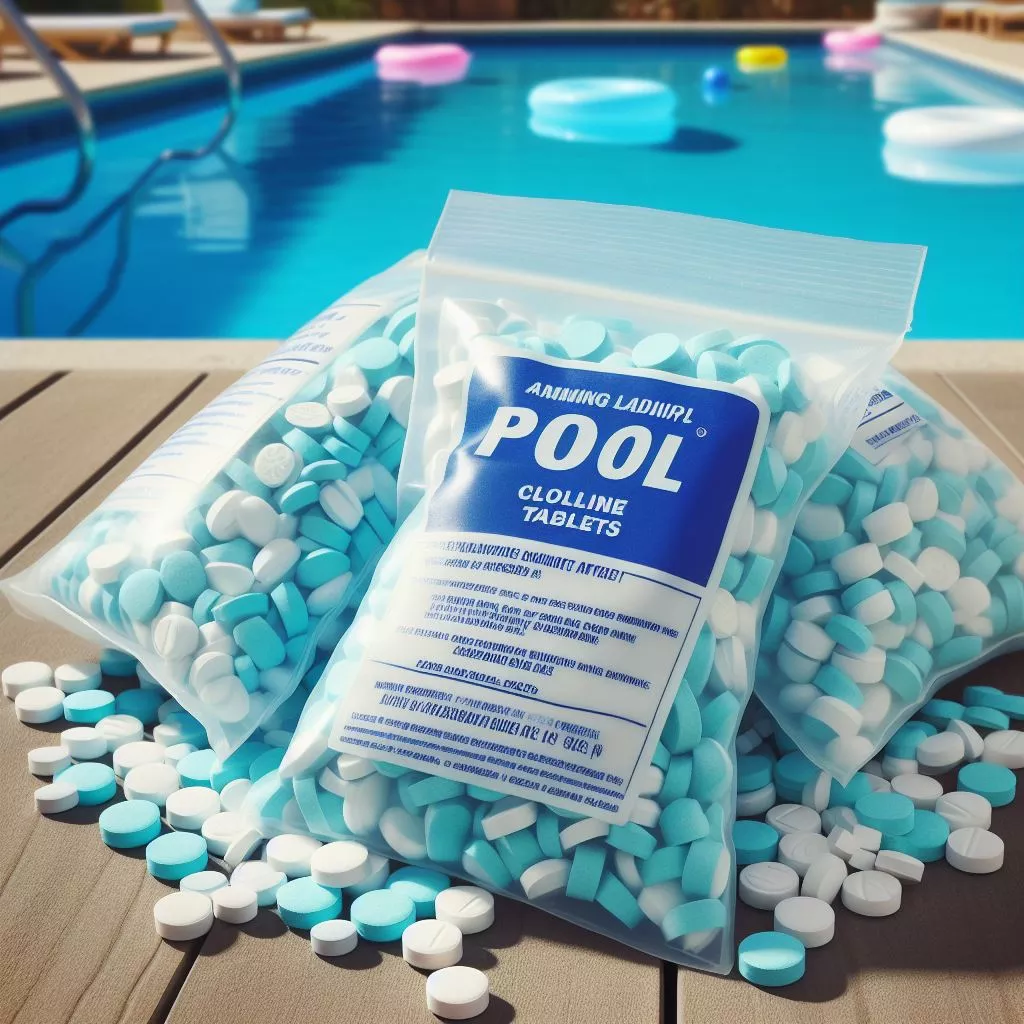Maintaining the right balance of chlorine in a swimming pool is essential for preserving water quality and ensuring a safe and enjoyable environment for swimmers. Pool chlorine tablets offer a convenient way to release chlorine gradually, but determining the optimal dosage is crucial. In this article, we will explore the factors influencing the ideal dosage of pool chlorine tablets to strike the perfect balance between effective disinfection and swimmers’ well-being.

Understanding the Role of Chlorine in Pool Maintenance
Chlorine serves as a powerful disinfectant in pools, effectively eliminating bacteria, viruses, and other contaminants that can compromise water quality. Proper chlorine levels prevent the spread of waterborne illnesses, promote clear water, and create a comfortable swimming environment.
Factors Influencing Optimal Chlorine Dosage
Pool Size
The size of the pool directly influences the required chlorine dosage. Larger pools naturally require more chlorine to maintain adequate disinfection levels. Smaller pools, on the other hand, may need less chlorine.
Bather Load
The number of swimmers using the pool affects the chlorine demand. Pools with a high bather load, such as public or commercial pools, generally need higher chlorine dosages to counteract the increased organic matter introduced by swimmers.
Temperature
Warmer temperatures accelerate the breakdown of chlorine, requiring higher dosages to compensate for increased chlorine consumption. Pool owners in warmer climates may need to adjust their chlorine dosage accordingly.
Sunlight Exposure
Ultraviolet (UV) rays from sunlight can degrade chlorine, reducing its effectiveness. Stabilizers are often included in pool chlorine tablets to counteract the impact of sunlight exposure.
pH Levels
The pH level of pool water significantly influences chlorine’s efficacy. Maintaining the correct pH range (7.2 to 7.8) ensures optimal chlorine activity. High pH levels can reduce chlorine’s disinfecting power, requiring a higher dosage.
Cyanuric Acid (CYA) Levels
Cyanuric acid, commonly used as a stabilizer, helps protect chlorine from sunlight degradation. However, excessive levels of CYA can lead to reduced chlorine effectiveness. Regular testing and adjustments are essential.
Calculating Optimal Chlorine Dosage
Use Chlorine Test Strips
Regularly test the chlorine levels in your pool using test strips. This provides a baseline for determining the current chlorine concentration.
Determine Free Chlorine Levels
Free chlorine is the active form of chlorine available for disinfection. Calculate the difference between the total chlorine and combined chlorine to determine the free chlorine levels.
Consider Cyanuric Acid Levels
Take into account the stabilizer (CYA) levels in your pool. The ideal ratio of free chlorine to CYA is crucial for effective disinfection.
Factor in Bather Load
If your pool experiences heavy use, adjust the chlorine dosage to compensate for the increased demand caused by organic matter introduced by swimmers.
Account for Weather Conditions
Consider the impact of weather conditions, such as temperature and sunlight exposure, on chlorine consumption. Adjust the dosage accordingly to maintain optimal disinfection.
Pool Chlorine Tablet Application Tips
Follow Manufacturer Guidelines
Adhere to the manufacturer’s guidelines for the specific pool chlorine tablets you are using. These guidelines provide information on the recommended dosage based on pool size and other factors.
Use a Chlorine Floater or Feeder
Employing a chlorine floater or feeder ensures a consistent release of chlorine into the pool, promoting even distribution and effective disinfection.
Monitor and Adjust
Regularly monitor chlorine levels and adjust the dosage as needed. Pool conditions can change, so ongoing testing is essential for maintaining water safety.
Shock Treatment
Consider periodic shock treatments to boost chlorine levels and eliminate contaminants. This is particularly beneficial after heavy pool usage or adverse weather conditions.
Conclusion
Achieving the optimal dosage of pool chlorine tablets requires a thoughtful approach that considers various factors impacting water quality. Regular testing, understanding pool conditions, and following manufacturer guidelines are crucial steps in maintaining a safe and inviting swimming environment. By striking the right balance in chlorine dosage, pool owners can ensure water safety while providing a pleasant experience for swimmers.

 Instant
Quote
Instant
Quote Email
Us
Email
Us